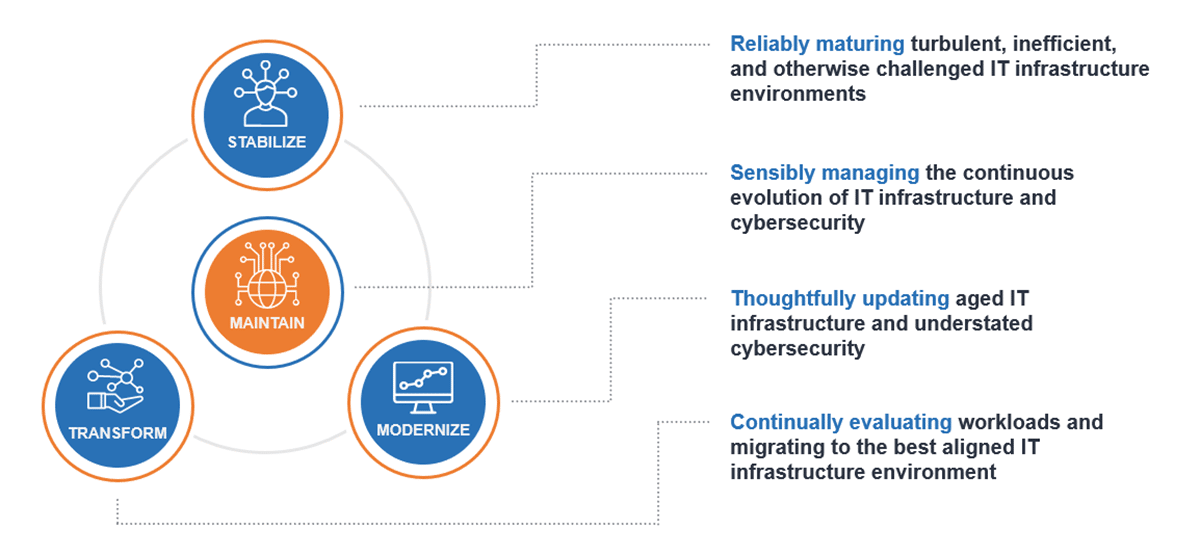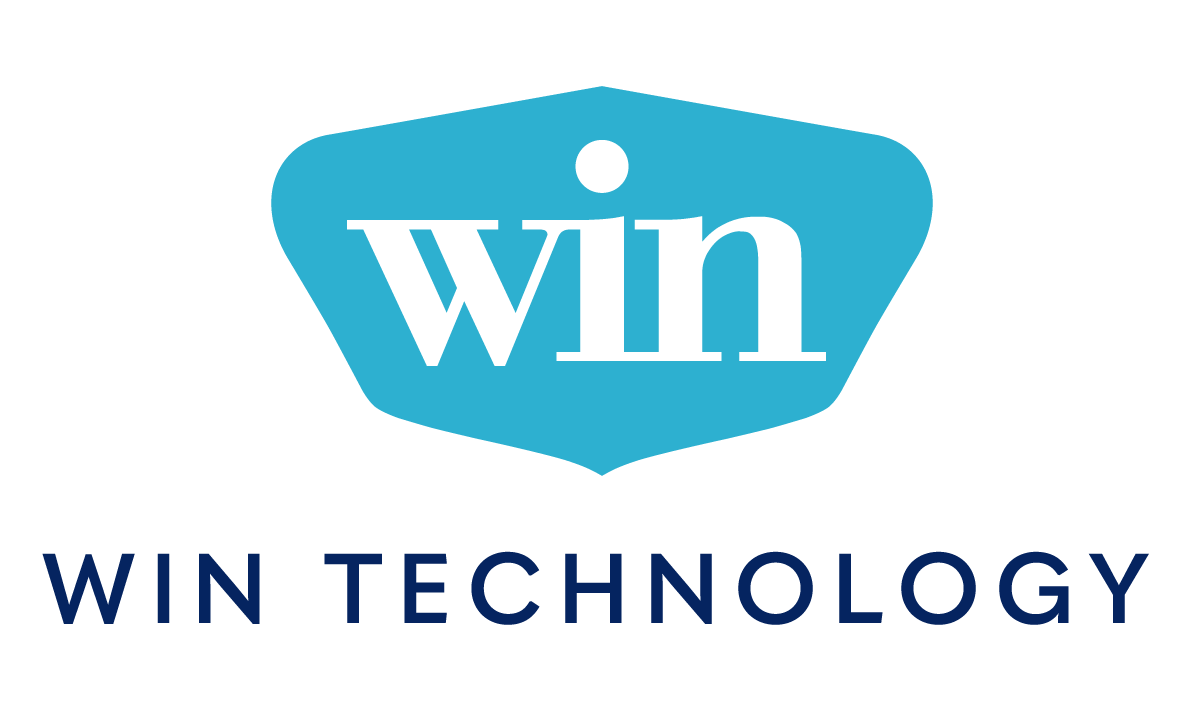What is a Technology Lifecycle?
There are four technology lifecycle stages that exist in every business. Oftentimes the business will experience two or three stages at a time. Each stage contains its own challenges and appropriate actions to achieve targeted outcomes. To effectively move through these stages, effective communication with your IT partner is critical.
Here at WIN, we developed the following framework to help recognize the characteristics of each stage and prescribe pragmatic actions: stabilize, maintain, transform and modernize.

The Maintain Stage
Technology is constantly progressing, and limited investment results in gaps in critical areas. The maintain stage focuses on adapting to change so you can hold your relative position.
Sensibly managing the continuous evolution of IT infrastructure and cybersecurity looks like:
- Comfortable with current state processes and technology
- Comfortable with current cybersecurity stance
- No destabilizing business events expected
- Resources are optimized from a cost and use perspective
Pragmatically adapting to change can help your business:
- Optimize costs
- Sustain prevailing risk position
- Gain ROI from IT investments
The Stabilize Stage
All organizations face events that create disorder in their IT systems. The disorder is tolerable for some time and later surfaces as a substantial pain point. The stabilize stage focuses on near term actions combined with longer-term planning to deliver your IT environment into a more orderly state.
Reliably maturing turbulent, inefficient, and otherwise challenged IT infrastructure environments and cybersecurity looks like:
- Technology sprawl is a challenge
- Security is not where you want it
- Business is not receiving proper value from IT infrastructure investments
- Business events have created some level of disruption
- Business applications are not performing as needed
Focusing on near term actions combined with longer-term planning can help your business:
- Contain and predict costs
- Improve risk position
- Increase productivity and improve employee experience
- Enrich customer experience
- Expand visibility of efforts and boost decision making confidence and pace
The Modernize Stage
The Modernize stage focuses on accelerating upgrades to infrastructure to extend beyond minimal maintenance of your relative state. Changing marketplace conditions drive the need to upgrade your infrastructure.
Thoughtfully updating aged IT infrastructure and understanding cybersecurity involves recognizing:
- Current state is stable but deteriorating
- Technology scalability is a challenge
- Security is not utilizing modern tools or methods
- Business is not receiving proper value from IT infrastructure investments
- Business events have surfaced shortcomings of the current infrastructure stance
Accelerating upgrades to infrastructure can help your business:
- Normalize costs
- Reduce risk
- Improve scalability to unlock growth, revenue, and profitability acceleration
- Accelerate productivity and employee experience
- Enrich customer experience
The Transform Stage
Successful digital transformations occur over longer time windows and require a more holistic and intentional planning approach. The transform stage focuses on planning, architecting, delivering, and supporting IT infrastructure geared to each phase of the digital transformation journey.
Continually evaluating workloads and migrating to the best aligned IT infrastructure environment and cybersecurity looks like:
- Current state is not optimized – business and supporting technology
- Technology support of digital transformation is a challenge
- Security paradigms are shifting with workload locations
- Business is embracing digital transformation and needs technology to enable it
- Business events are imposing the need for change within people, process, and technology
Planning, architecting, delivering, and supporting IT infrastructure geared to each phase of the digital transformation journey can help your business:
- Align costs
- Improve overall risk profile through expanded risk management methods
- Accelerate productivity and employee experience
- Enrich customer experience
- Expand visibility of efforts and boost decision making confidence and pace
Communicating Keeps All Members of the Team “In the Know”
Recognizing business value from technology usage is often elusive. One path to surfacing these values is brought about by continuous communication highlighting operational data in context. Regular communications with key contributors ensures awareness and drives action to attain targeted business value.
There is a specific communication framework that drives success:
- Inform: Informative communication is delivered as the baseline data to convey what’s transpiring in your environment with your systems and our services.
- Guide: Guided communication adds benchmarks and other reference points to turn data into knowledge and insights to support your decisions.
- Activate: Activated communication extends insights into pragmatic planning and actions that produce value you can recognize and attain.
Have questions or want to learn more?
If you would like to learn more about identifying and navigating the technology lifecycle stages in your business, read our eBook or contact us for a no-obligation consultation.
